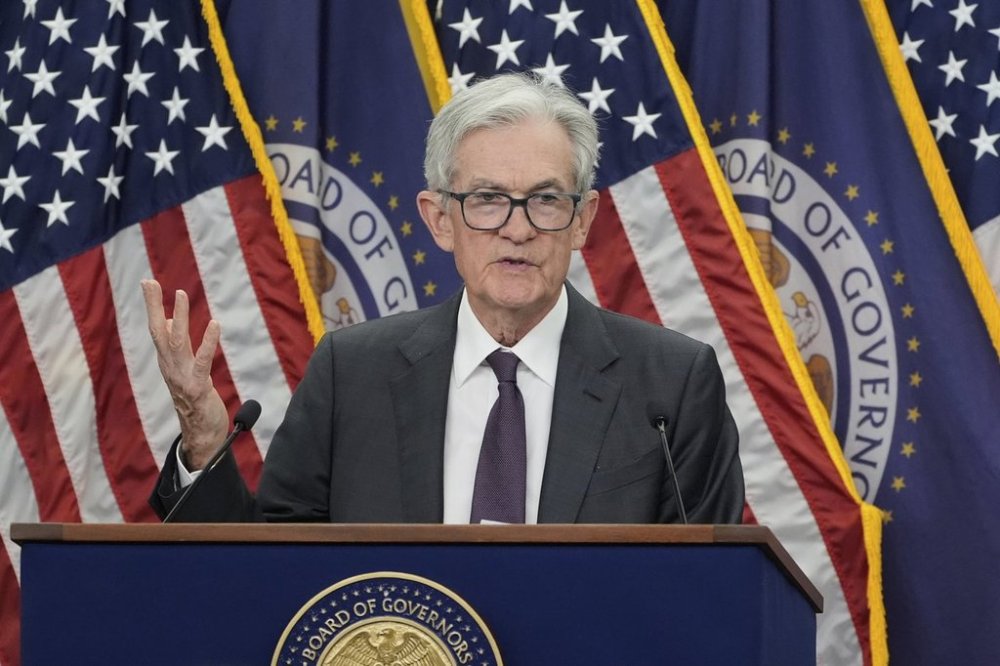Business
Inflation Rises Again as Tariffs Impact Consumer Prices

Inflation in the United States likely increased in July for the third consecutive month, driven by tariffs that raised the costs of imported goods including furniture, appliances, and toys. This development complicates the Federal Reserve’s ability to lower short-term interest rates, a move repeatedly requested by President Donald Trump.
According to a survey by data provider FactSet, consumer prices are projected to have risen by 2.8% in July compared to the same month last year. This marks an increase from 2.7% in June and a post-pandemic low of 2.3% in April. Core inflation, which excludes volatile food and energy prices, is anticipated to rise to 3%, up from 2.9% in June—both figures significantly exceeding the Federal Reserve’s target of 2%.
The potential increase in inflation comes at a time when job growth has slowed dramatically. Following Trump’s announcement of extensive tariffs in April, hiring rates have stalled, leading to heightened expectations in financial markets for a rate cut by the central bank. Nevertheless, Federal Reserve Chair Jerome Powell has cautioned that rising inflation could prevent the Fed from acting, a stance that has frustrated Trump, who has openly challenged the traditional independence of the central bank.
This situation unfolds as the Bureau of Labor Statistics prepares to release the inflation data. The agency recently faced internal turmoil after Trump dismissed Erika McEntarfer, the former head of BLS, following disappointing job reports. The president has appointed E.J. Antoni, an economist at the conservative Heritage Foundation and a critic of the jobs report, to replace her. Trump stated on social media that Antoni would ensure the accuracy of the data released.
Adding to the BLS’s challenges is a government-wide hiring freeze, which has reduced the amount of data collected for inflation reports. Economist Alan Detmeister of UBS estimates that the BLS is now gathering approximately 18% fewer price quotes than in previous months, which may lead to increased volatility in the inflation report.
Monthly price changes are expected to be modest, with prices rising by only 0.2% from June to July, while core prices are projected to rise by 0.3%. Notably, gas prices are likely to have decreased in July, and grocery costs are anticipated to show minimal increases, tempering overall inflation.
The impact of tariffs on prices first became apparent in the June inflation report, where toy prices surged by 1.8% from May to June, following a 1.3% increase the previous month. Additionally, clothing prices rose by 0.4%, and sporting goods prices increased by 1.8%. The average tariff level has escalated from around 2% before Trump took office to nearly 18%, the highest level since the early 1930s, according to research from the Budget Lab at Yale.
Currently, most imports from the European Union and Japan are subject to tariffs of 15%, while goods from Taiwan face 20%39%. Despite these increases, other trends appear to be helping to moderate inflation. For instance, the rate of price increases for apartment rents has cooled after sharp rises during the pandemic. Furthermore, prices for new cars have dipped slightly, even as the auto industry grapples with 25% tariffs on vehicles and parts.
Automakers like Ford and General Motors have reported substantial tariff costs, with Ford indicating it paid $800 million in tariffs in the second quarter, and General Motors shouldering $1.1 billion. Stellantis has noted it has incurred $350 million in tariffs, part of a projected $1.7 billion cost for the year. As companies adjust to the financial landscape created by tariffs, consumers are likely to see increased costs in the near future.
Despite Trump’s claims that overseas manufacturers would absorb the tariffs by lowering their prices, the reality suggests otherwise. Economists at Goldman Sachs estimate that foreign manufacturers have absorbed only 14% of the duties as of June, with consumers bearing 22% and U.S. companies shouldering 64%. Patterns from previous tariffs indicate that consumers will increasingly absorb costs; by fall, they are expected to carry 67% of the burden.
Several large companies are already raising prices in response to tariffs, including apparel makers Ralph Lauren and Under Armour, and eyewear brand Warby Parker. Consumer goods giant Procter & Gamble announced a price increase on approximately 25% of its products, while cosmetics company e.l.f. Beauty raised prices across its entire product line in response to tariff costs.
As the economic landscape continues to evolve, the impact of tariffs on inflation will remain a critical issue for consumers and policymakers alike. The upcoming inflation report is expected to provide further insights into the ongoing effects of current trade policies on the economy.
-

 Politics4 weeks ago
Politics4 weeks agoSecwepemc First Nation Seeks Aboriginal Title Over Kamloops Area
-

 World5 months ago
World5 months agoScientists Unearth Ancient Antarctic Ice to Unlock Climate Secrets
-

 Entertainment5 months ago
Entertainment5 months agoTrump and McCormick to Announce $70 Billion Energy Investments
-

 Science5 months ago
Science5 months agoFour Astronauts Return to Earth After International Space Station Mission
-

 Lifestyle5 months ago
Lifestyle5 months agoTransLink Launches Food Truck Program to Boost Revenue in Vancouver
-

 Technology3 months ago
Technology3 months agoApple Notes Enhances Functionality with Markdown Support in macOS 26
-

 Lifestyle3 months ago
Lifestyle3 months agoManitoba’s Burger Champion Shines Again Amid Dining Innovations
-

 Top Stories2 months ago
Top Stories2 months agoUrgent Update: Fatal Crash on Highway 99 Claims Life of Pitt Meadows Man
-

 Politics4 months ago
Politics4 months agoUkrainian Tennis Star Elina Svitolina Faces Death Threats Online
-

 Sports5 months ago
Sports5 months agoSearch Underway for Missing Hunter Amid Hokkaido Bear Emergency
-

 Politics5 months ago
Politics5 months agoCarney Engages First Nations Leaders at Development Law Summit
-

 Technology5 months ago
Technology5 months agoFrosthaven Launches Early Access on July 31, 2025




















